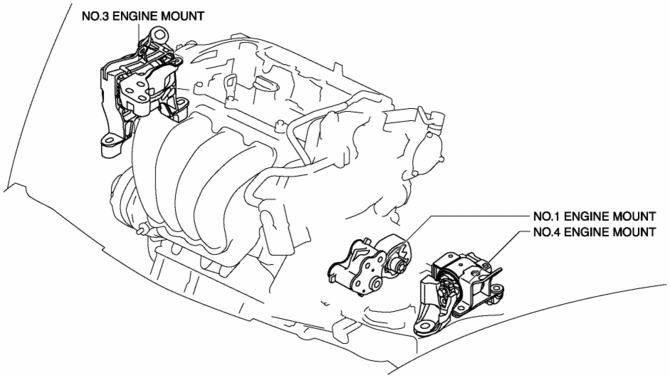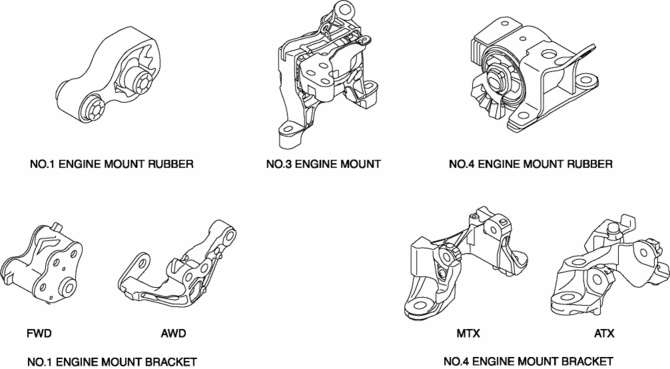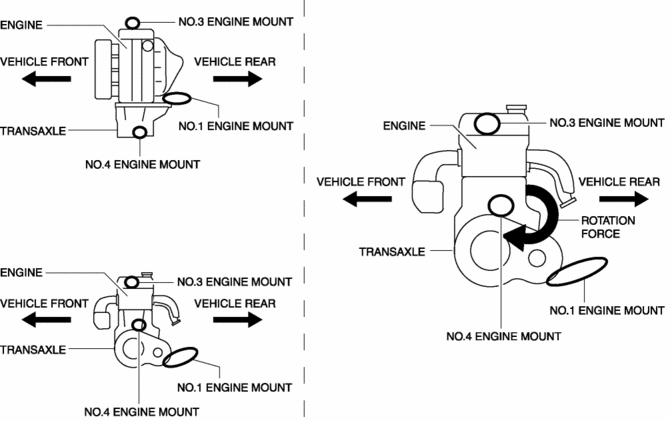Mazda CX-5 Service & Repair Manual: Engine Mount
Purpose, Function
-
The engine mount secures the engine and transaxle to the vehicle body, reducing vibration and noise.
Construction
-
The three points at the engine front (No.3 engine mount), one side of the transaxle (No.1 engine mount), and the rear upper part of the transaxle (No.4 engine mount) are supported.

-
With the adoption of the oil-filled bushing type for the No.3 engine mount and No.4 engine mount rubber, the damper effect has been improved.

Operation
-
By locating the one side of the transaxle (No.1 engine mount) to the transaxle lower end, the No.1 engine mount absorbs the rotation force to the powertrain generated during engine torque fluctuation. The layout is designed to disperse the rotation force to the front/back directions of the engine.

 Engine Mount Disassembly/Assembly
Engine Mount Disassembly/Assembly
No.1 Engine Mount (2WD)
1. Remove the front under cover No.2..
2. Remove in the order indicated in the table.
3. Install in the reverse order of removal.
1
No.1 engi ...
 Piston Assembly
Piston Assembly
...
Other materials:
Front ABS Wheel Speed Sensor Removal/Installation
1. Remove the mudguard..
2. Remove in the order indicated in the table.
3. Install in the reverse order of removal.
4. After installation, verify that there is no twisting in the front ABS wheel-speed
sensor.
1
Connector
2
Bolt
...
Steering Gear And Linkage Inspection
1. Remove the steering gear and linkage..
2. Remove the tie-rod end and boot..
3. Measure the rotation torque of the pinion shaft using a crescent wrench and
pull scale. (speed measurement reference 5 В°/s)
a. Install the crescent wrench to the steering gear.
b. Measure the length fr ...
Door Lock Switch Removal/Installation
Driver's Side
NOTE:
The driver's side door lock switch cannot be removed as a single unit because
it is built into the power window main switch. If the driver's side door lock
switch is replaced, replace the power window main switch..
Passenger's Side
1. Disconn ...
